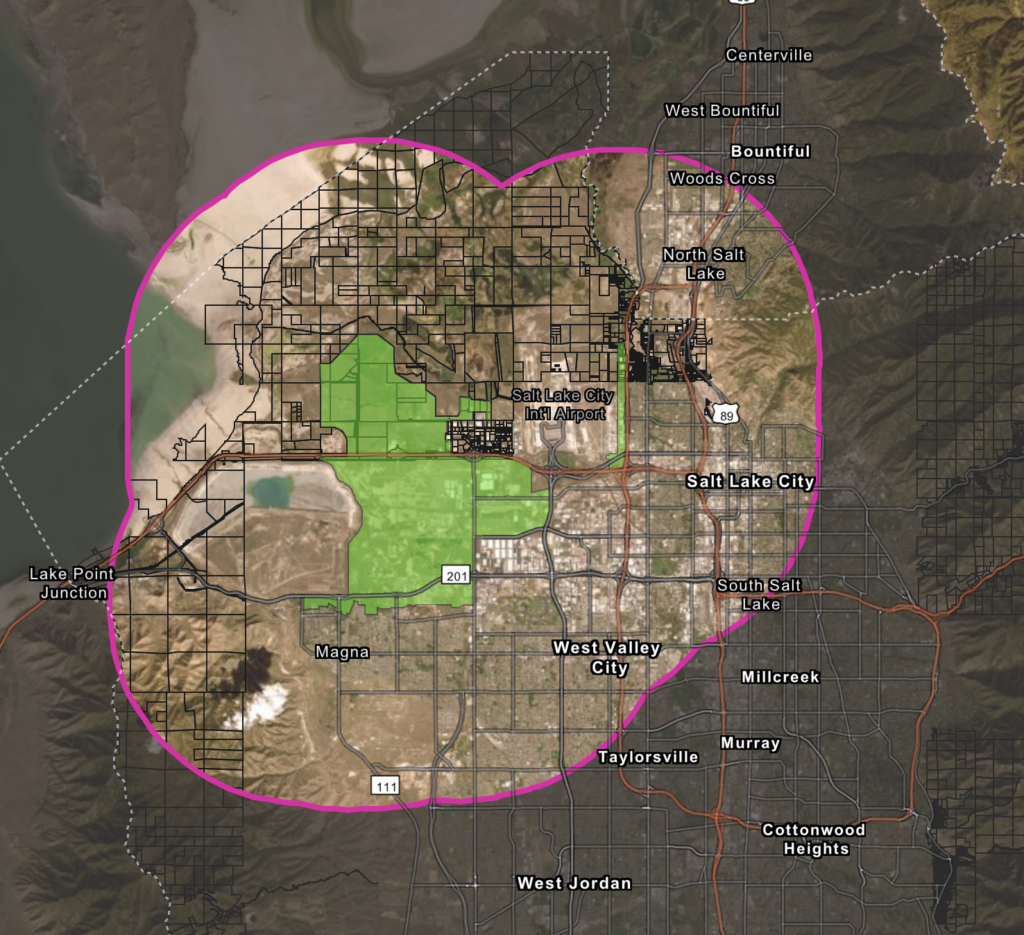
Protests around a proposed Utah inland port have heightened as construction and building plans evolve. Citizens are concerned with the potential damage to habitat and wetlands, decrease in air quality and increased traffic the port may cause.
“We’re in a climate crisis and we simply can’t afford to build projects that will contribute to the long-term destruction of a healthy environment,” protestor Mary K. Reinhart tweeted.
In response to protests over the inland port at the Utah State Chamber of Commerce building, the office of Salt Lake County District Attorney Sim Gill announced charges in a news release Monday, Oct. 21.
The District Attorney’s office reviewed vast amounts of evidence from surveillance videos, cell phones and media footage. As they considered the crucial distinction between lawful protesting and primal conduct, the office concluded to charge 10 people with criminal conduct.
Environmental concerns among protesters have caused the Inland Port Authority, a board of directors that oversees the progress of the inland port, to have a heightened awareness of ways to make the port as environmentally friendly as possible, Jack Hedge, the port authority’s executive director, said.
“We’re still in the early stages, looking at new 21st-century technologies so we can eliminate, or at least reduce, a lot of negative impacts of freight movement,” Hedge said.
Proposals for the port would develop over 16,000 acres to create an inland harbor where trucks and trains can load and unload cargo. The port will be located in the northwest quadrant of Salt Lake County.
This area was proposed as an ideal location because of its placement by I-80 and State Route 201, its proximity to an international airport and its closeness to train tracks — all of which make it possible for various types of transportation to reach this inland hub of mass exchange.
The 2017 Salt Lake County Global Trade and Investment Plan recommended the construction of the port and concluded that Utah has a number of favorable assets, such as Foreign Trade Zone #30, the Union Pacific Intermodal Terminal, a broad range of industrial warehousing and the Salt Lake City International Airport.
With these regional assets and locational benefits in mind, the Utah State Legislature passed a bill during the 2018 legislative session that established the Utah Inland Port Authority and designated the area in which the authority would have jurisdiction.
The port will grow Utah’s economy and strengthen trade relationships by giving Utah the opportunity to become a testing ground for economically safe work policies and regulations that can reduce negative emissions and pollution in the environment.
The traditional model suggests that the state take all the risk in forward-funding infrastructure for the state’s personal benefit. Even though the state should be an investor, they plan to only be seen as a partner in order to mitigate risk.
Two other inland ports in the U.S. are located in South Carolina and Missouri. Utah’s inland port will differ from these as it builds a reputation of a “clean” port.
The Utah Inland Port Authority is working with developers, trucking companies, railroads and cargo owners to implement clean truck technologies and a near-zero-emissions cargo handling technology.
These actions are meant to encourage the use of high-efficiency building standards to protect Utah’s environment. Although these actions are taken out of concern for the environmental impacts, protestors are still wary of the port and potential damages it may cause.
As protestors voice their concerns for the port, Envision Utah, a group that engages local citizens to create and sustain communities for current and future residents, has tried to explain and publicize the realities and benefits of the port to put protestors’ worries at ease.
Envision Utah sees the inland port as a way to take the market demand that’s already happening as more people shop online and purchase goods overseas and steer it in a direction to make sure these economic developments can benefit Utahns.
Ari Bruening, president and COO of Envision Utah, believes the port can implement strategies to address protesters’ concerns while still benefiting Utah economically.
“The area near the airport is already under industrial development, the idea of the inland port is to ensure the economic benefits to Utah are all they can be. This will help businesses get their goods to market while simultaneously managing air quality and traffic to ensure a high quality of life,” Bruening said.
Hedge also promised the port would work to address protestors’ concerns.
“We will incentivize forward-thinking and best technology solutions. A focus on clean trucks, clean cargo handling, stormwater management and the diversion of water back the Salt Lake will not just mitigate damage but enhance the operations,” Hedge said.
Although clean technologies and environmentally friendly policies are being proposed for the inland port, protestors show concern that the port will have a negative impact on air quality and the environment and will drive an increase in traffic.
As the number of protestors attending inland port meetings continues to grow, police officers have had to escort those opposed to the inland port out of the meeting because of inappropriate behavior and the violation of fire codes.
To protestors, Hedge would say, “Make room for all voices.”
“When a meeting is disrupted to the point where other people can’t be heard, that is doing a disservice to the community. I would ask for a bit more civility and openness to your fellow citizens,” he said.
Those with further concerns about the implications of the inland port can visit Envision Utah’s website where they will release updates and news regarding the inland port’s progress.




